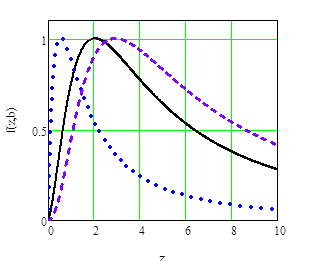
Redshift of quasars and time dilation
Abstract
The most of the cosmic objects moves along a screw line: a rotation and progressive motion. The shift of the spectrum of the emitting bodies is due to the time difference in the motionless and moving reference frames. In the case of the progressive motion, the Doppler effect takes place, in the case of rotation – the Sagnac effect is observed. It is shown that the observed redshift (and blue shift as well) of the spectra of cosmic objects is due to the Sagnac effect. The parameter of redshift depends on the parameters of its own non-inertial reference frame of every cosmic object (its angular velocity and dimension). It is intrinsic ones for every object and does not determine the distance from us to a cosmic object.
It was shown that the Sagnac effect predominates, and therefore, the time dilation and the change of the distances between close objects have to be negligible even at great.
Therefore, the Hubble law and the hypothesis about the Universe expansion don’t have their main grounds and are wrong.
Full Text:
PDFReferences
Slipher V.M. Nebulae. Proc. Amer. Phil. Soc. 1917; 56: 403-409. 2. Arp H. Observational Cosmology: From High Redshift Galaxies to the Blue Pacific. Prog.Phys. 2005; 3: 3-6. 3. Arp H., Catalog of Discordant Redshift Associations. Apeiron, Monreal, 2003. 4. Arp H., Russell D.G. A possible relationship between quasars and clusters of galaxies. ApJ, 2001; 549:
-819.
Narlikar J., Arp H. Flat Spacetime Cosmology-A Unified Framework for Extragalactic Redshifts. ApJ.1993; 405: 51-56.
Lopez-Corredoira M., Gutierrez C. Two emission line objects with ${ vec z}> mathsf {0.2} $ in the optical filament apparently connecting the Seyfert galaxy NGC 7603 to its companion. A&A, 2002; 390(3): L15-L18.
Arp H. Atlas of Peculiar Galaxies,1966.
Marmet P. A New Non-Doppler Redshift. Physics Essays, 1988; 1: 24-32.
Marmet P. The Cosmological Constant and the Redshift of Quasars . IEEE Transactions on Plasma Science, 1992; 20(6): 958-967.
Marmet P. Redshift of Spectral Lines in the Sun's Chromosphere, IEEE Transactions on Plasma Science, 1989; 17: 238-243.
Russell.D.G. Morphological type dependence in the Tully-Fisher relationship. ApJ. 2004; 607: 241-246. 12. Oke J.B. Redshift and absolute spectral energy distributions of galaxies clusters. ApJ. 1971; 170: 193-198.
Kierein J., Sharp B.M. Compton effect Interpretation of Solar Red Shifts Solar Phys.1968; 3: 450-453.
Arp H. Seeing Red: Redshift, Cosmology and Academic Science. Apeiron. Quebec. 1998.
Arp H., Burbidge E.M., Burbidge G. The double radio source 3C343.1: A galaxy-QSO pair with very different redshifts. A&A. 2008, (arXiv:astro-ph/0401007v1 2Jan2004).
Arp H. The distribution of high-redshift (z>2) quasars near active galaxies, Ap J 1999; 525:594–602,
Steinhardt C., Capak P., Masters D., Speagle J. The impossibly early Galaxy Problem. ArXiv: 1506.01377v2 [astro-ph.GA] 8 Apr 2016.
Sagnac.M.G. The demonstration of the luminiferous aether by an interferometer in uniform rotation. C.R.Acad.Sci.1913; 157:708-710; 1410; 1914, J.Phys.Ser.5 (Paris), 4,177.
Varoquaux E., Varoquaux G. The Sagnac effect in superfluids. Uspekhi fizicheskih nauk. (russ), 2008; 178: 217-221. Available from: Physics–Uspekhi, 2008, 51:2, 205–208
Andronova I.A., Malykin G.B., Physical problems of the fiber gyroscope on the Sagnac effect. Uspekhi fizicheskih nauk., (russ),2002; 172, 849. Available from: Physics–Uspekhi, 2002, 45:8, 793–817.
Pomerantsev N.M., Skrotskii G.V. The Physical foundations of quantum gyroscopes. Uspekhi fizicheskih nauk., (russ), 1970; 100: 361-394.
Hawkins M.R.S. On time dilation in quasar light curves. MNRAS, 2010; 405: 1940-1946; ApJ Let, 2001;.553, L97-L99.
Proust, D., Quintana, H., Carrasco, E., et al. 2006, The Shapley Supercluster: The Largest Matter Concentration in the Local Universe, ESO M. ArXiv Astrophysics e-prints, 2005, p. 9903 -9903.
Refbacks
- There are currently no refbacks.
